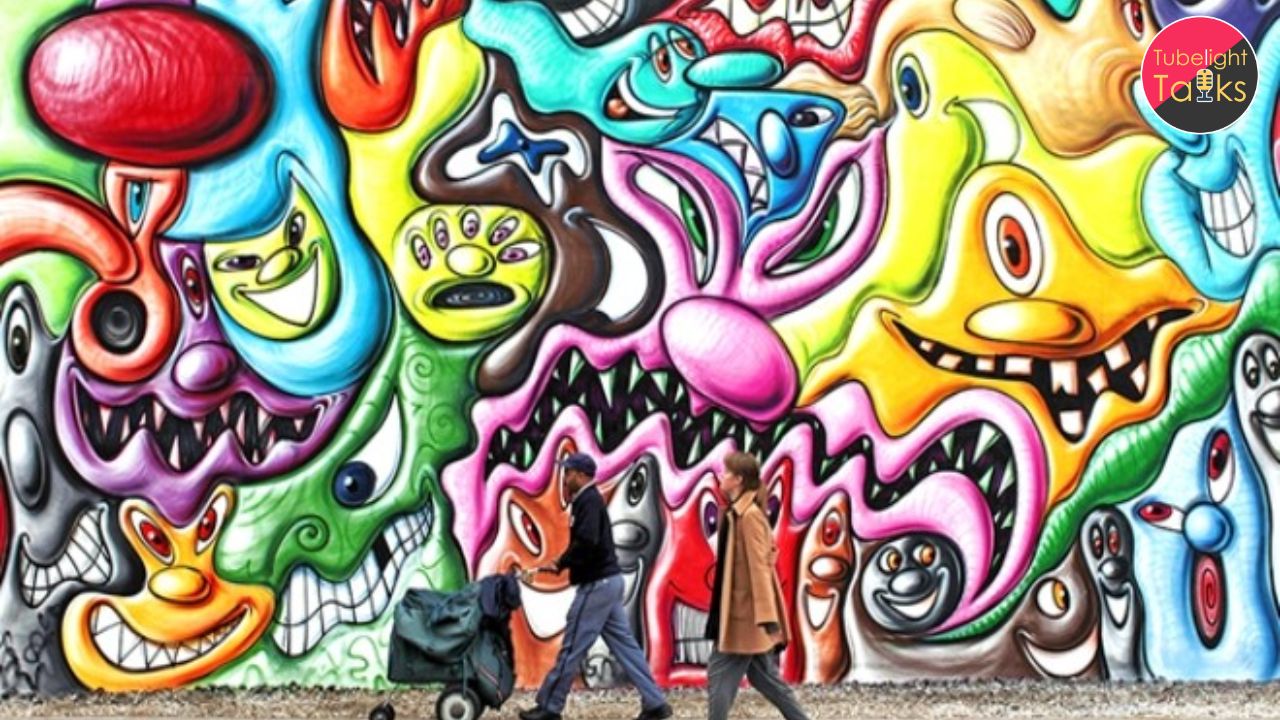Once dismissed as a rebellious crime, graffiti has now emerged as a celebrated force within the global art scene. What began as a symbol of rebellion has now become a valuable cultural and commercial asset, showcased in galleries, auctioned at record-breaking prices, and used in branding and tourism. From the back alleys of New York to the colourful streets of New Delhi, this article reviews graffiti’s journey.
The Beginnings: Graffiti as Protest
Graffiti’s origins can be traced to communities where voices were often ignored or suppressed.
- In the 1970s, New York became a hub for young artists who used city walls and subway trains to display their messages and monikers.
- These tags and murals weren’t just random scrawls. They were bold attempts to claim visibility and presence in a society riddled with inequality.
- While authorities saw this as vandalism, certain artists began to stand out for their unique visual language.
- Figures like Jean-Michel Basquiat and Keith Haring emerged from the street scene and began producing works that were eventually exhibited in prestigious galleries.
- Basquiat, in particular, started with mysterious writings on city walls before his art gained international acclaim. His canvases now sell for millions of dollars.
Image Copyright Sotheby’s
Graffiti: Global Recognition
Graffiti’s transformation gained momentum in the late 20th and early 21st centuries.One of the most influential figures in this shift was the elusive British artist Banksy. Banksy, with his signature stencil style, challenged political norms and societal issues, bridging the gap between urban street art and high-end galleries. When his piece Girl with Balloon partially destroyed itself after being sold at auction, it wasn’t dismissed, instead, it became even more valuable. This moment captured the raw energy and rebellious spirit that continues to define graffiti today.
Image Copyright Dominic Robinson
In places such as São Paulo, Berlin, and Cape Town, graffiti has evolved into a powerful tool for expressing local narratives and social defiance. In Brazil, for instance, Eduardo Kobra’s massive murals combine photorealism and social commentary. In South Africa, street artists often use public walls to address complex post-apartheid realities.
Also Read: How is AI Challenging The Very Definition of Art?
The Indian Context: A Rising Street Art Culture
India’s relationship with graffiti is more recent, but growing rapidly. In the past, Indian walls were mostly reserved for political messages, film posters or traditional motifs. Over time, however, a new form of expression began emerging and this one that blended Indian themes with contemporary street art techniques.
- A key contributor to this change has been the St+art India Foundation, which organises street art festivals and public projects across cities like Delhi, Mumbai and Pune.
- Among their landmark projects is the creative makeover of Delhi’s Lodhi Colony, turning it into the country’s first open-air art gallery on public streets.
Image Source: St+art India Foundation work in Lodhi Colony
- These murals reflect both local narratives and international influences, making art accessible beyond gallery walls.
Image Source: St+art India Foundation work in Lodhi Colony
- Artists like Daku, known for his clever use of light and shadow, and Zake who merges calligraphy with graffiti styles, have helped bring Indian street art into global conversations for street art.
- Their work not only adds visual flair to public spaces but also challenges viewers to reflect on issues like consumerism, identity and technology.
- Majority street art is used to either communicate or rebel against the prevalent issues in the society.
A Commercial Turn
How did graffiti become such a profitable art form?
- Firstly, it remains deeply rooted in authenticity.
- It captures raw human expression, completely unfiltered and emotionally resonant.
- In an age of polished social media visuals using AI, graffitis are perceived as fresh perspectives.
- Secondly, graffiti art on the streets is often temporary, making original pieces rare and, therefore, considered as highly collectible among contemporary art collectors.
Leading fashion labels and global brands are increasingly embracing graffiti-inspired designs, partnering with street artists to tap into its bold cultural influence – evident in collaborations with names like Louis Vuitton, Adidas, and PepsiCo.
Graffiti Can Speak, But Only Divine Knowledge Can Heal
While graffiti has evolved into a medium for social commentary, giving voice to the oppressed and shedding light on issues like inequality, corruption and injustice, it does not solve these problems. It remains a mirror, not a remedy. These vibrant murals may spark conversation, but they cannot heal the deep-rooted problems of the world.
True and lasting change cannot come from paint or protest alone. It requires a transformation of the inner self. That transformation is only possible through the divine and scientifically structured spiritual wisdom imparted by a Complete Saint (Tatvdarshi Sant). The revolutionary teachings of a Tatvdarshi Sant possess such divine power that they can transform even the most sinful soul into a highly virtuous soul.
Currently, Jagatguru Tatvdarshi Sant Rampal Ji, the singular Complete Saint in this world, is building the most virtuous community of disciples. His teachings are not limited to any religion or class. They awaken the soul, guiding individuals away from harmful behaviours and towards a life of peace, truth and righteousness.
When human beings begin to live by spiritual principles rooted in true devotion and moral discipline, as shown by Sant Rampal Ji Maharaj, a natural shift occurs. Crime declines, hatred fades and a pure, compassionate society begins to take shape. This is not because of laws or fear, but because people themselves no longer desire to harm others or the environment.
In essence, while graffiti can highlight society’s wounds, only the eternal spiritual truth revealed by Sant Rampal Ji Maharaj has the power to heal them and build a clean, harmonious and just world from within.
This video is a testimony to the remarkable transformations Sant Rampal Ji Maharaj’s disciples witness once under His impenetrable refuge:






